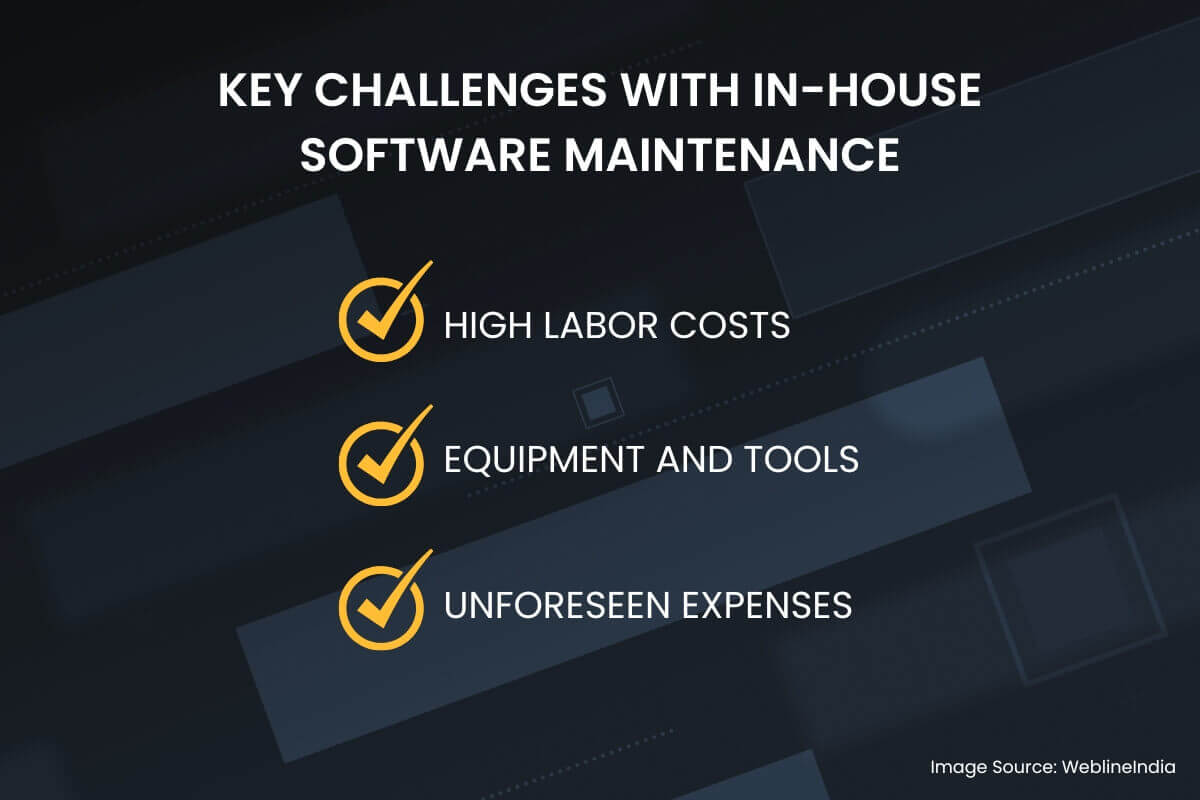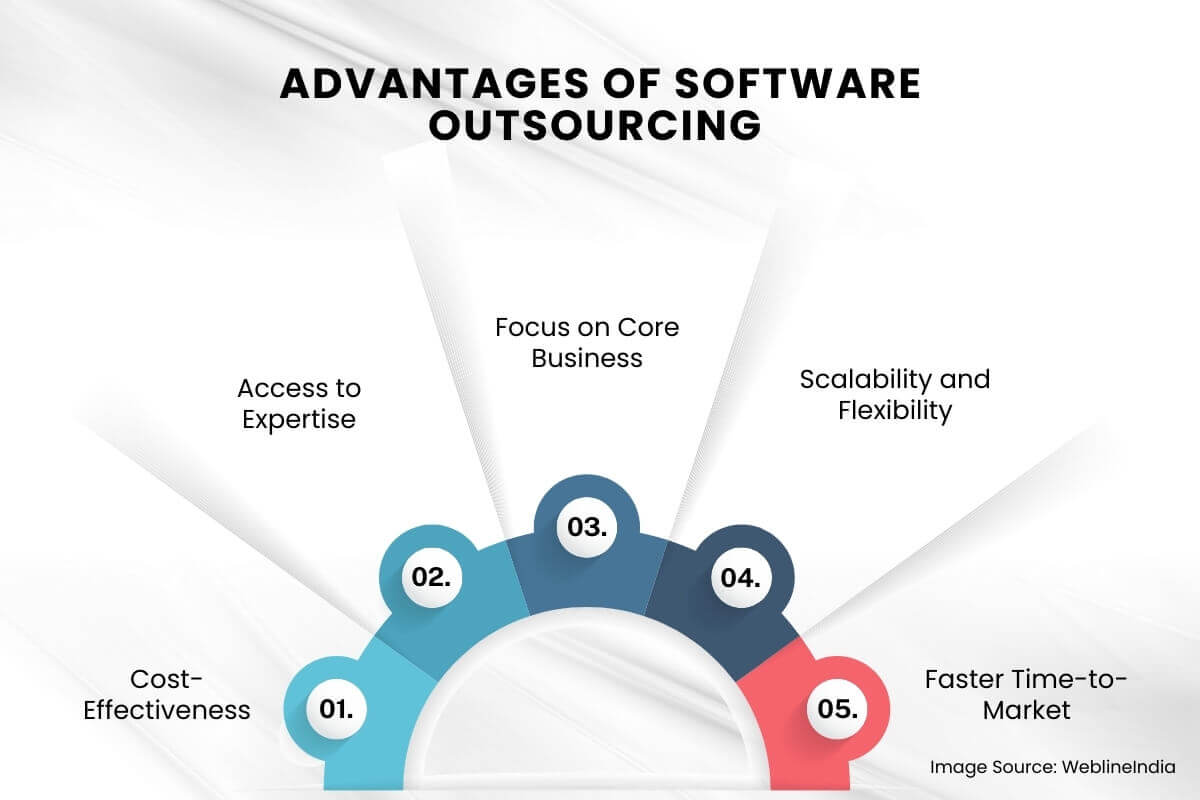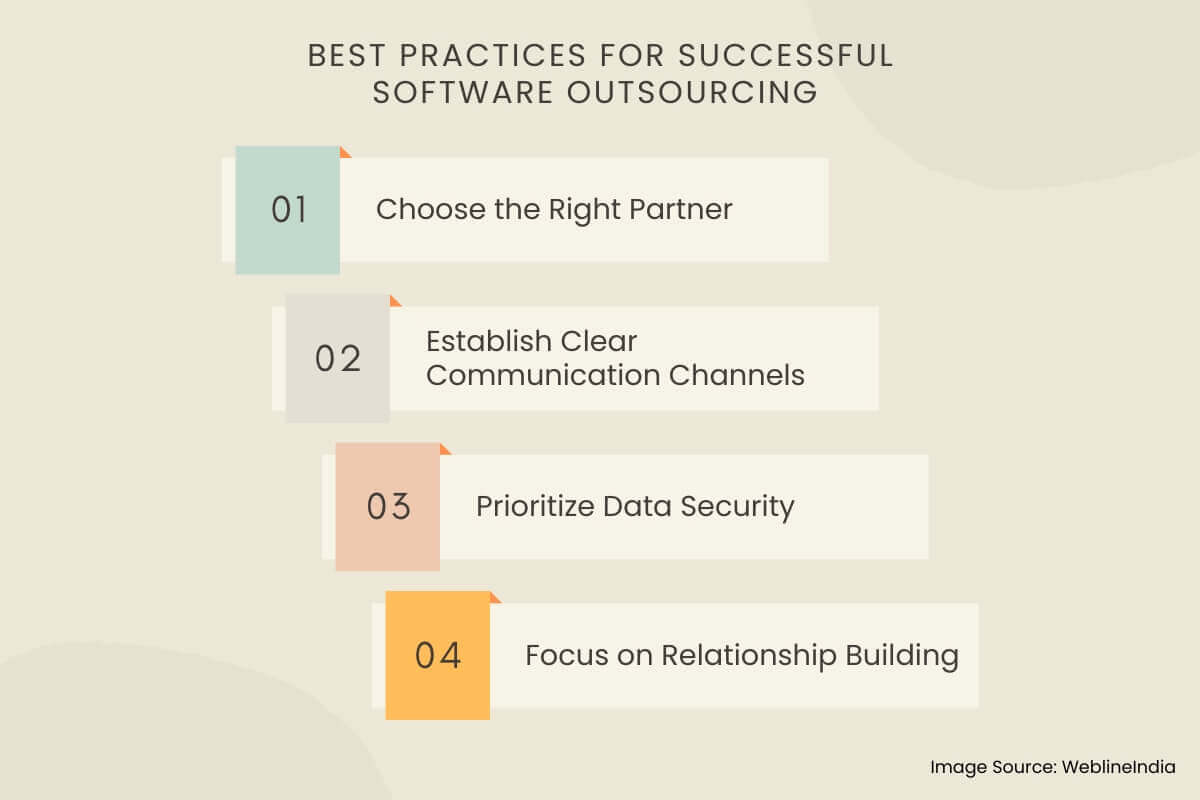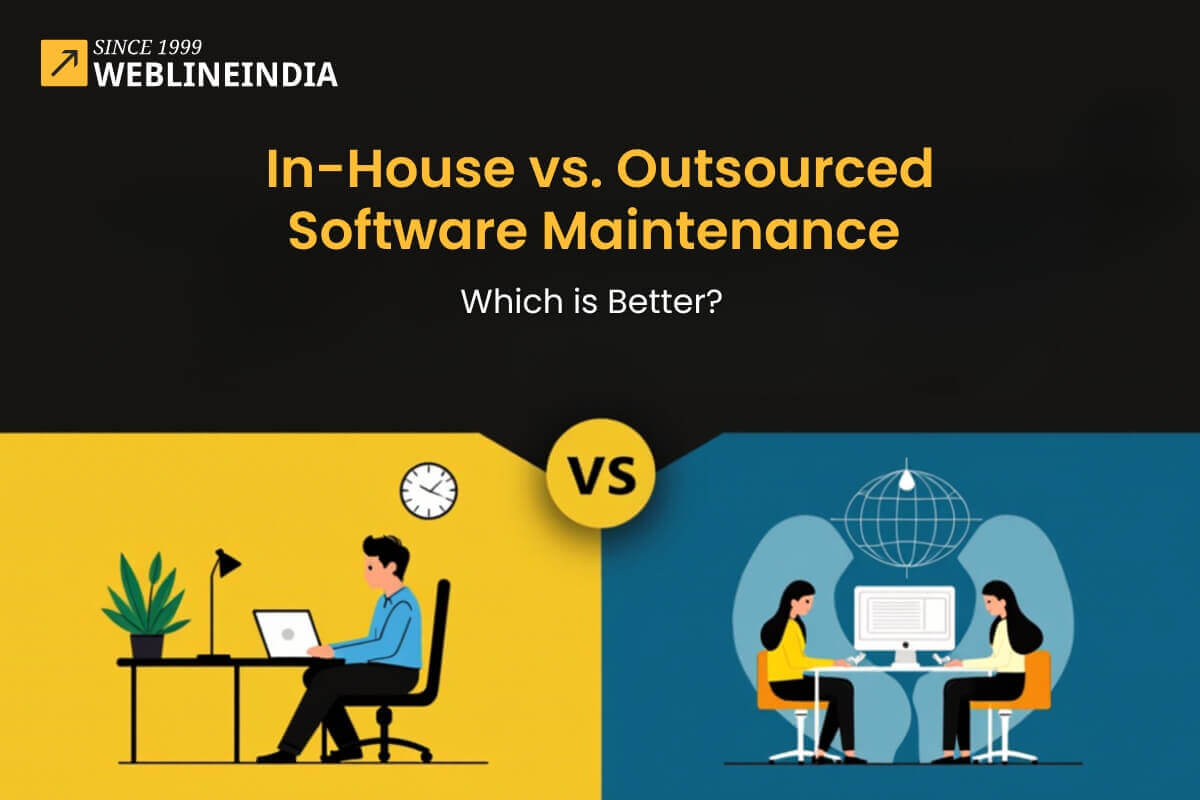Listen to the podcast :
The world of software development extends far beyond the initial creation phase. Once a software product is launched, the need for ongoing software maintenance services becomes crucial to ensure its longevity and relevance. This continuous process involves updates, bug fixes, and enhancements to keep the software running smoothly and adapt to evolving user needs.
Verified Market Reports quote that the software maintenance service market size was valued at USD 9 Billion in 2023 and is projected to reach USD 16 Billion by 2031, growing at a CAGR of 8.77% during the forecasted period 2024 to 2031.
Organizations often face a critical decision when it comes to software maintenance: should they handle it in-house or outsource it to a specialized provider? Both approaches have their merits and drawbacks, but in many cases, software outsourcing offers a compelling array of advantages that can significantly benefit businesses. You can read further statistics and figures about maintenance and trends in 2025.
Is your in-house team struggling to keep up with software updates?
What is Software Maintenance?
Before diving into the comparison between in-house and outsourced maintenance, it’s essential to understand what software maintenance services entail. Professional software maintenance services refer to the process of modifying and updating software applications post-launch to address any issues, enhance performance, and add new features. These services encompass everything from bug fixes and security patches to system upgrades and performance tuning.
Maintaining software is a critical part of ensuring it continues to function as expected and adapts to changing user needs. Without proper maintenance, software can become outdated, inefficient, and insecure, ultimately affecting business operations. Therefore, organizations must have a strategy in place to ensure their software remains up-to-date and functional.
In-House Software Maintenance
Costs and Resources: The Burden of In-House Maintenance
While many organizations prefer to manage software maintenance services in-house, this approach often proves to be more costly than anticipated. One of the primary reasons businesses opt for in-house maintenance is the perceived control over the process. However, the costs associated with managing a dedicated in-house team of developers and IT experts can be overwhelming.
Key challenges with in-house software maintenance

- High labor costs: Hiring developers, IT professionals, and system administrators requires significant financial investment, especially when considering salaries, benefits, and training costs.
- Equipment and tools: To maintain software efficiently, in-house teams require specialized tools, software, and infrastructure, further increasing the budget for maintenance tasks.
- Unforeseen expenses: The cost of software maintenance can rise unexpectedly when critical issues arise, requiring urgent intervention that disrupts the planned budget.
Moreover, in-house teams must juggle software maintenance tasks with other responsibilities, such as developing new features or managing internal systems. As a result, maintenance tasks may not receive the attention they deserve, leading to delays and inefficiencies.
The Limitations of In-House Expertise
Another significant drawback of handling software maintenance services internally is the limited expertise that an in-house team can provide. Even the most experienced internal developers might not be familiar with every possible technology or framework needed to troubleshoot complex issues.
Challenges with in-house expertise:
- Limited knowledge base: An in-house team might not have the expertise required for all the latest programming languages, tools, or systems needed for comprehensive maintenance.
- Lack of specialization: In-house teams are often generalists, meaning they may lack deep knowledge of specific technologies, frameworks, or emerging trends in software maintenance.
- Time constraints: The focus on other tasks, such as developing new features or handling critical business processes, can lead to a reactive, rather than proactive, approach to software maintenance.
In-house teams are also often distracted by other responsibilities, such as new product development or general IT operations. Maintenance tasks might be pushed to the back burner, resulting in delays and inefficiencies.
Scalability and Adaptability Challenges
Scalability is another area where in-house maintenance falls short. The demands on software maintenance services can fluctuate based on the size and complexity of the software, and as the business grows, the maintenance workload may increase. For an in-house team, scaling up quickly can be a logistical nightmare, requiring additional hiring, training, and resources.
Scalability challenges with in-house maintenance:
- Hiring delays: Increasing the size of an in-house team involves the time-consuming process of recruiting and training new employees, which delays the scaling process.
- Limited flexibility: In-house teams may struggle to adapt quickly to sudden changes in maintenance demands or software updates, leading to inefficiencies.
If the business experiences a surge in software activity or a major upgrade is needed, in-house teams may not be able to meet the increased demand without significant delays. This lack of adaptability can impact the overall performance and reliability of the software.
Tired of high software maintenance costs? Discover how outsourcing can save your business time and money!
Software Maintenance Outsourcing: A Strategic Approach
Software maintenance outsourcing involves delegating software maintenance services to a third-party provider specializing in this domain. This strategy has gained immense popularity due to its potential to enhance efficiency and reduce costs.
Statista quotes some stunning stats about outsourcing:
- The IT Outsourcing market is on the cusp of a global boom. Forecasts predict an astonishing US$591.20 billion in IT Outsourcing revenue by 2025.
- This surge is expected to maintain momentum with a strong 8.28% CAGR from 2025 to 2029.
- The IT Outsourcing market is projected to reach a massive US$812.70 billion by 2029.
Advantages of Software Maintenance Outsourcing

- Cost-Effectiveness: Software outsourcing often proves to be more economical than maintaining an in-house team, especially for routine maintenance tasks. This allows organizations to allocate their budget more strategically. One of the key benefits of outsourcing software maintenance is the ability to convert fixed costs into variable costs, leading to improved budget predictability and control.
- Access to Expertise: Software outsourcing companies possess a vast pool of skilled professionals with specialized knowledge in various areas of software maintenance, including legacy systems and emerging technologies.
- Focus on Core Business: Outsourcing maintenance tasks frees up internal resources, allowing organizations to concentrate on their core competencies and strategic initiatives.
- Scalability and Flexibility: Outsourcing provides the flexibility to scale maintenance efforts up or down based on business needs, enabling efficient resource allocation and cost optimization.
- Faster Time-to-Market: With a dedicated developers team handling maintenance, organizations can accelerate their response to bugs and user feedback, leading to faster turnaround times and improved customer satisfaction.
Cost of Software Maintenance: A Comparative Analysis
The cost of software maintenance can vary significantly depending on several factors, including the complexity of the software, the frequency of updates, and the chosen approach (in-house or outsource). While initial estimates might suggest that in-house maintenance appears cheaper, a comprehensive analysis often reveals the long-term cost-effectiveness of software outsourcing.
Consider these factors when evaluating the cost of software maintenance:
- Salaries and benefits for in-house IT staff
- Infrastructure costs (hardware, software, office space)
- Training and development expenses for internal teams
- The opportunity cost of diverting internal resources from core projects
In contrast, software outsourcing typically involves a predictable fee structure, making it easier to budget and control maintenance expenses.
Making the Decision: In-House vs Outsource Software Maintenance
The choice between in-house and outsource for software maintenance depends on several factors, including:
- Budget: Evaluate the overall cost of software maintenance for both approaches.
- Expertise: Assess the technical skills and experience required for effective maintenance.
- Business Goals: Determine how software maintenance aligns with the organization’s strategic objectives.
For many organizations, outsourcing to a top software maintenance company offers greater benefits than managing it in-house. Software outsourcing offers a strategic solution to ensure the longevity, efficiency, and cost-effectiveness of software products.
Best Practices for Successful Software Maintenance Outsourcing

To maximize the benefits of outsourcing software maintenance, consider these best practices:
- Choose the Right Partner: Select a reputable software outsourcing company with a proven track record and expertise in your industry.
- Establish Clear Communication Channels: Ensure seamless communication with your offshore development team through regular meetings, progress reports, and well-defined escalation paths.
- Prioritize Data Security: Implement robust security measures and ensure compliance with relevant data protection regulations.
- Focus on Relationship Building: Cultivate a strong and collaborative relationship with your outsourcing partner for long-term success.
Summarizing table
The table highlights the advantages of outsourcing software maintenance over handling it in-house, emphasizing cost efficiency, scalability, expertise, and flexibility. Here is a comparative table between In-house Software Maintenance vs Outsourcing Software Maintenance:
| Criteria | In-house Software Maintenance | Outsourcing Software Maintenance |
| Cost | Higher, due to salaries, benefits, and overhead costs | Lower, with cost-effective pricing models, reduced overhead |
| Expertise | Limited to the in-house team’s skills and knowledge | Access to specialized experts with diverse technology skills |
| Scalability | Challenging to scale quickly due to hiring and training delays | Easy to scale resources based on workload and project needs |
| Flexibility | Less flexible to handle fluctuating maintenance demands | Highly flexible with the ability to adjust team size as needed |
| Speed of Response | Slower response time, especially for urgent issues | Faster response times with 24/7 support and global reach |
| Security | Full control over security protocols and data management | Dependable outsourcing partners with strong security measures and compliance |
| Focus on Core Business Activities | Diverts attention from core activities due to time spent on maintenance | Frees up internal resources to focus on core business tasks |
| Innovation and Upgrades | Might be limited due to resource constraints and priorities | Ensures continuous updates and proactive software improvements |
| Risk of Obsolescence | Higher risk of using outdated tools or practices due to lack of exposure to newer technologies | Proactive updates, regular patches, and adoption of new technologies to keep the software current |
Outsourcing Software Maintenance to WeblineIndia – the Winning Strategy
After thoroughly considering both in-house and software outsourcing options, it’s clear that outsourcing provides the most significant advantages for businesses looking to optimize their software maintenance processes. Outsourcing software development services not only reduce the cost of software maintenance, but it also provides access to specialized expertise, scalability, flexibility, and faster response times.
In contrast to the challenges of in-house maintenance, WeblineIndia’s RelyShore software outsourcing model offers a cost-effective, efficient, and secure solution that allows businesses to focus on growth while ensuring their software remains up-to-date, secure, and high-performing. With so many advantages, outsourcing is undoubtedly the superior choice for software maintenance.
Social Hashtags
#SoftwareMaintenance #ITOutsourcing #TechSupport #SoftwareUpdates #BusinessGrowth #ManagedServices #SoftwareDevelopment #ITSupport #TechTrends #OutsourceIT
Looking for a reliable software maintenance provider to keep your systems secure and up to date?
Testimonials: Hear It Straight From Our Customers
Our development processes delivers dynamic solutions to tackle business challenges, optimize costs, and drive digital transformation. Expert-backed solutions enhance client retention and online presence, with proven success stories highlighting real-world problem-solving through innovative applications. Our esteemed clients just experienced it.










